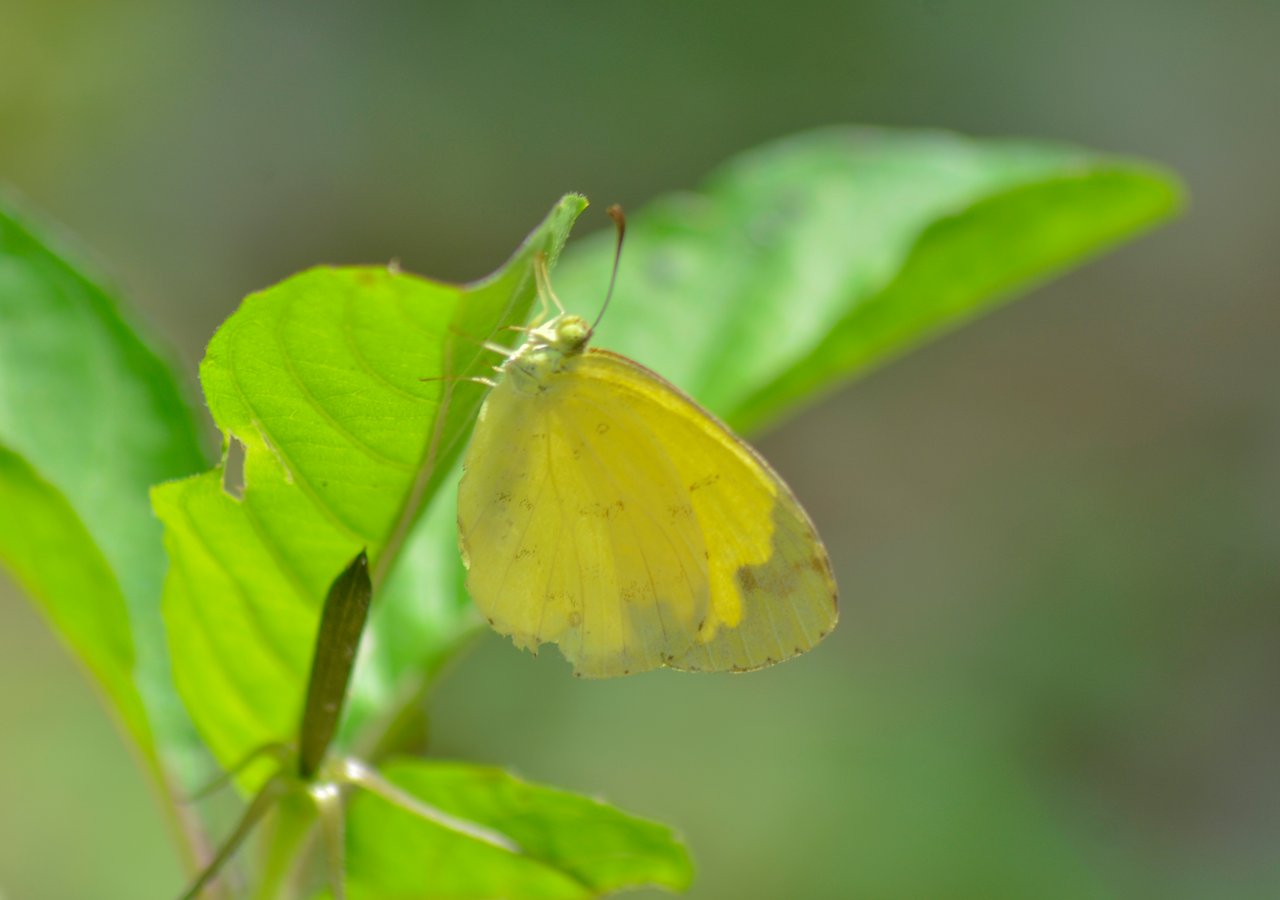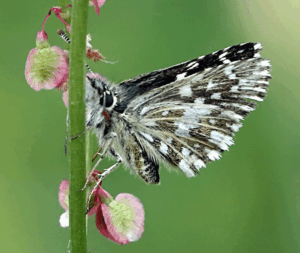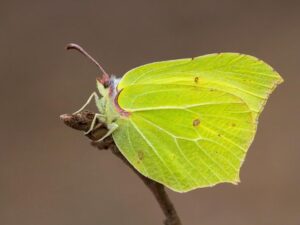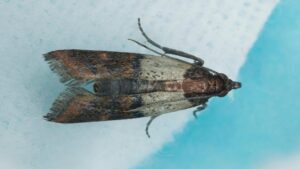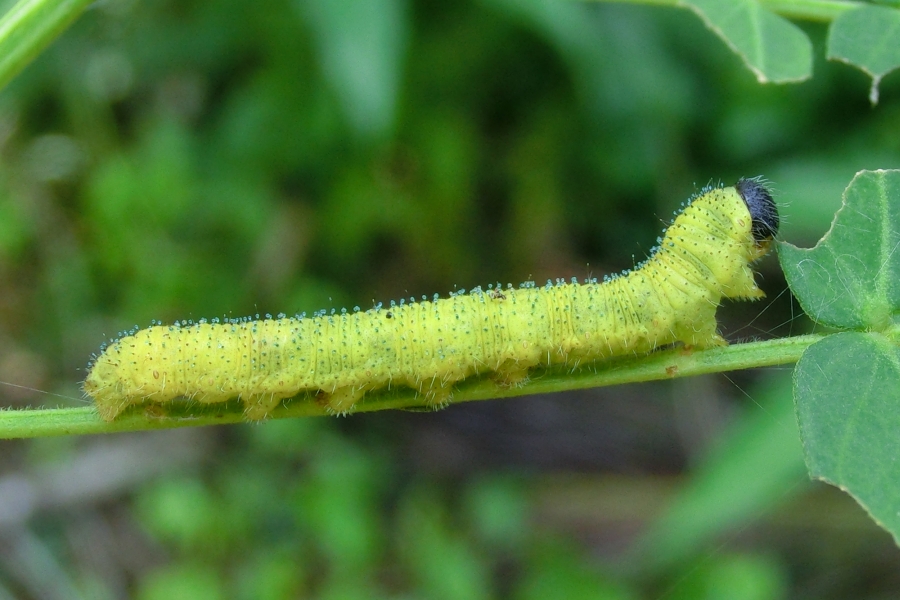
SOUTH ASIA
Common Grass Yellow
Eurema hecabe, the common grass yellow is a small pierid butterfly species found in Asia, Africa and Australia. They are found flying close to the ground and are found in open grass and scrub habitats. It is simply known as “the grass yellow” in parts of its range; the general term otherwise refers to the entire genus Eurema.
Did you know?
The Common Grass Yellow is often referred to as the most abundant butterfly in Malaysia and Singapore.
Eurema hecabe, the common grass yellow, is a small pierid butterfly species found in Asia, Africa and Australia.They are found flying close to the ground and are found in open grass and scrub habitats. It is simply known as “the grass yellow” in parts of its range; the general term otherwise refers to the entire genus Eurema.
Description
The common grass yellow exhibits seasonal polyphenism. The lepidopteran has a darker summer morph, triggered by a long day exceeding 13 hours in duration, while the shorter diurnal period of 12 hours or less induces a fairer morph in the post-monsoon period.
Male
Upperside (dorsal surface): yellow, variable in tint from sulphur to rich lemon yellow according to season and locality. Forewing: apex and termen deep black, this colour continued narrowly along the costal margin to base of wing, near which it often becomes diffuse; the inner margin of the black area from costa to vein 4 very oblique and irregular, between veins 2 and 4 excavate on the inner side, this excavation outwardly rounded between the veins and inwardly toothed on vein 3; below vein 2 the black area is suddenly dilated into a square spot which occupies the whole of the tornal angle; the inner margin of this dilatation is variable, in the typical form slightly concave. Hindwing: terminal margin with a narrow black band which is attenuated anteriorly and posteriorly; dorsal margin broadly paler than the ground colour.
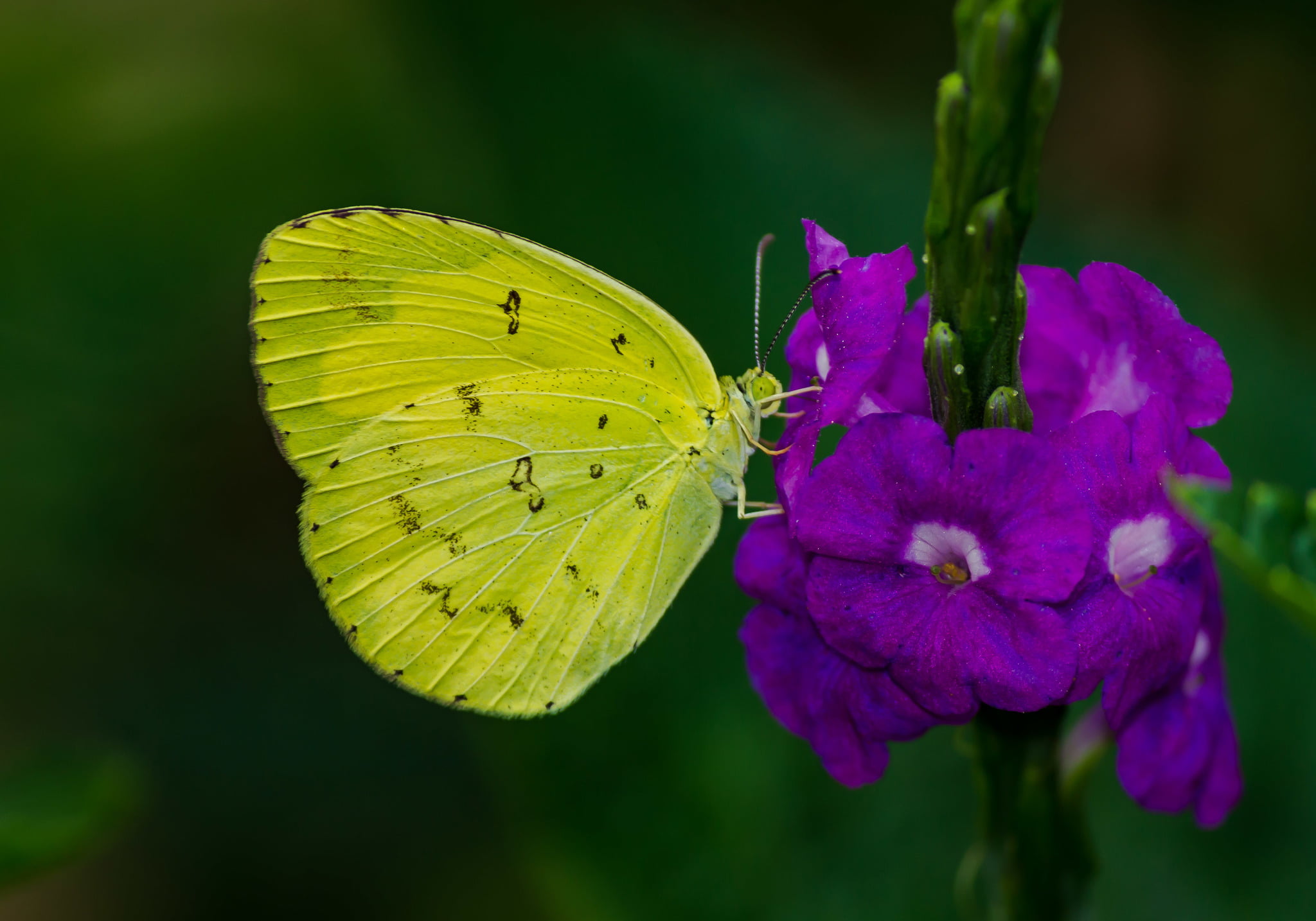
The region of dorsal surface that appears visibly yellow to humans also reflects brightly in the ultraviolet (320-400 nm) owing to the presence of multilayer cuticular nanostructures.
Underside (ventral surface): yellow, generally a slightly paler shade than that of the upperside, with the following reddish-brown markings. Forewing: two small spots or specks in basal half of cell and a reniform (kidney-shaped) spot or ring on the discocellulars. Hindwing: a slightly curved subbasal series of three small spots, an irregular slender ring or spot on the discocellulars, followed by a highly irregular, curved, transverse, discal series of spots or specks, some or all of which are often obsolescent. On both the forewings and hindwings, the veins that attain the costal and terminal margins end in minute reddish-brown specks. Antenna are greyish yellow, the club black; head, thorax and abdomen are yellow, shaded with fuscous scales; beneath: the palpi, thorax and abdomen are yellowish white. The sex-mark seen from above appears as a thickening of the basal half of the median vein on the forewing.
Life cycle
Eggs are laid on Abrus precatorius, Falcataria moluccana, Acacia sp., Aeschynomene species and numerous other Leguminosae, Euphorbiaceae and Cucurbitaceae sp..
Studies suggest that the females can discriminate colours when choosing host plants for oviposition.
Larva: “Long, green, rough, cylindrical, or slightly depressed, with a large head.”
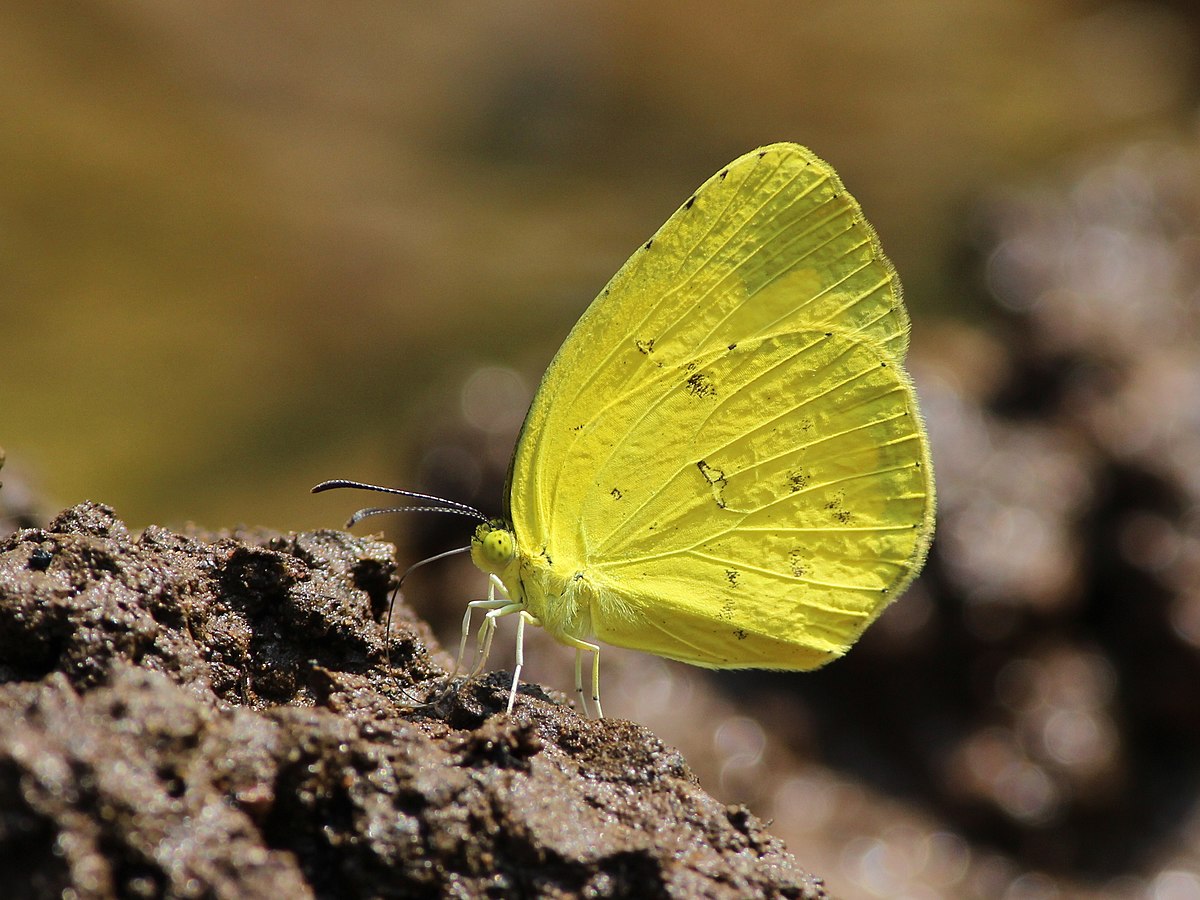
Pupa: “Suspended by the tail and by a moderately long band; the abdominal segments are round, but the thorax is much compressed, the wing-cases uniting to form a deep sharp keel. The head-case terminates in a short pointed snout. Ordinarily the pupa is solitary and green, but sometimes on a twig in large numbers. Many Pierine and other larvae seek each others company at that time. Having selected a dead branch of some neighbouring bush, they acquired the colour of their surroundings as nearly all Pierine and Papilionine pupae do to a greater or less extent.”
This species has been found to be parasitised by multiple strains of Wolbachia. These bacteria can alter the sex ratios of the species.
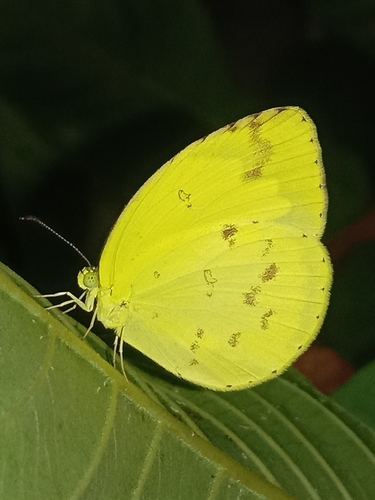
Common Grass Yellow Butterfly (Eurema Hecabe)
Well then! I am finally coming up with some photos of common grass yellow butterfly that I found in my backyard yesterday afternoon. It was darting over the ground when I saw it making slowly move to the wild plant, I decided to come a bit closer to take a few pictures that I used to do when I sighted the beautiful stuff around. According to my observation, it is one of beautiful butterflies that I ever found, especially the color that attracted so badly to capture this winged insect.
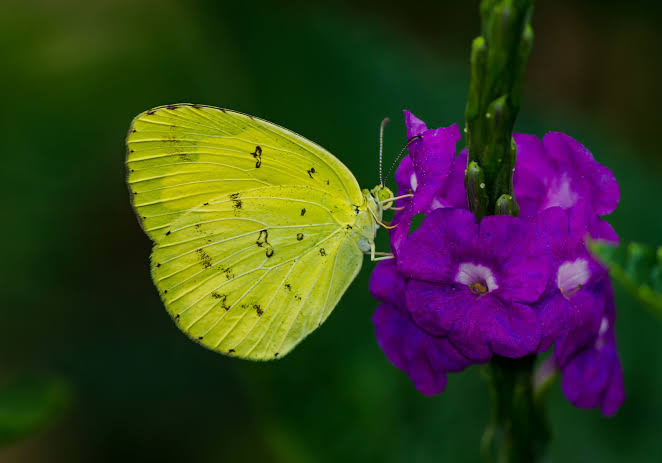
It is called common grass yellow butterfly (Eurema hecabe), that are often found in large dense groups of mixed species, including the statira sulphur (Aphrissa statira), apricot sulphur (Phoebis argante), and the straight-line sulphur (Rhabdodryas trite). The species eats nectar from red-colored plants. It is fairly small butterfly, readily recognized by their bright yellow wings and their habit of gathering in small groups on patches of damp sand or soil.
Despite their name, none of their caterpillars feed on grasses – the name is derived from the fact that most species are found in disturbed grassy habitats.

